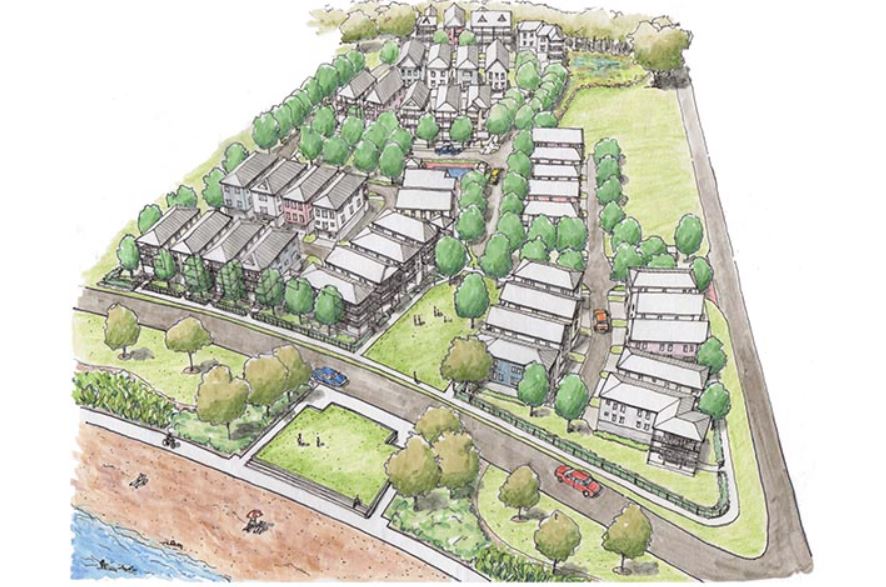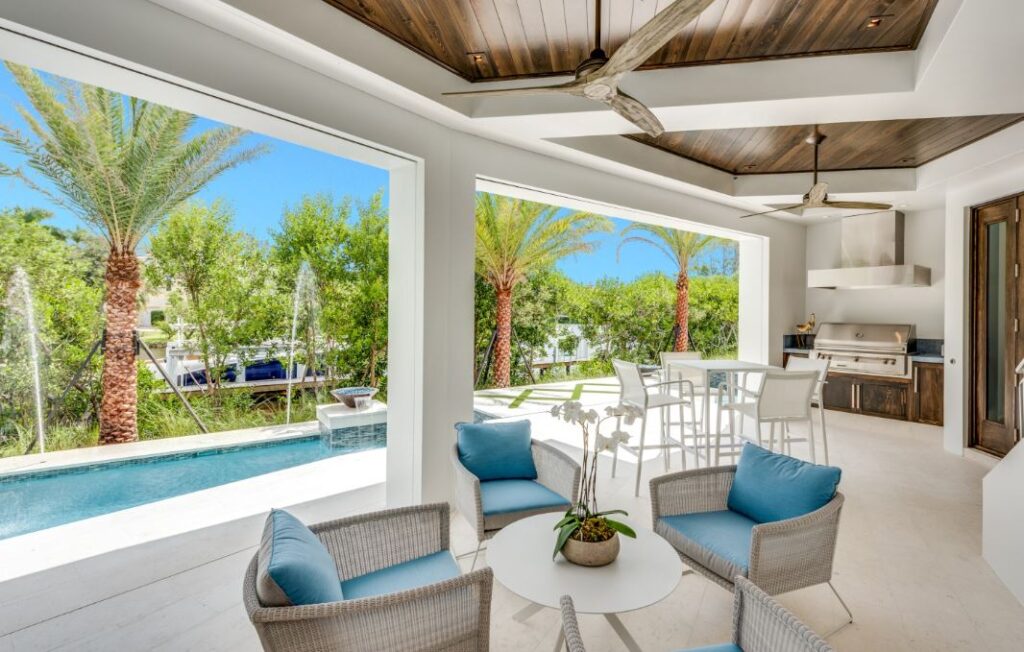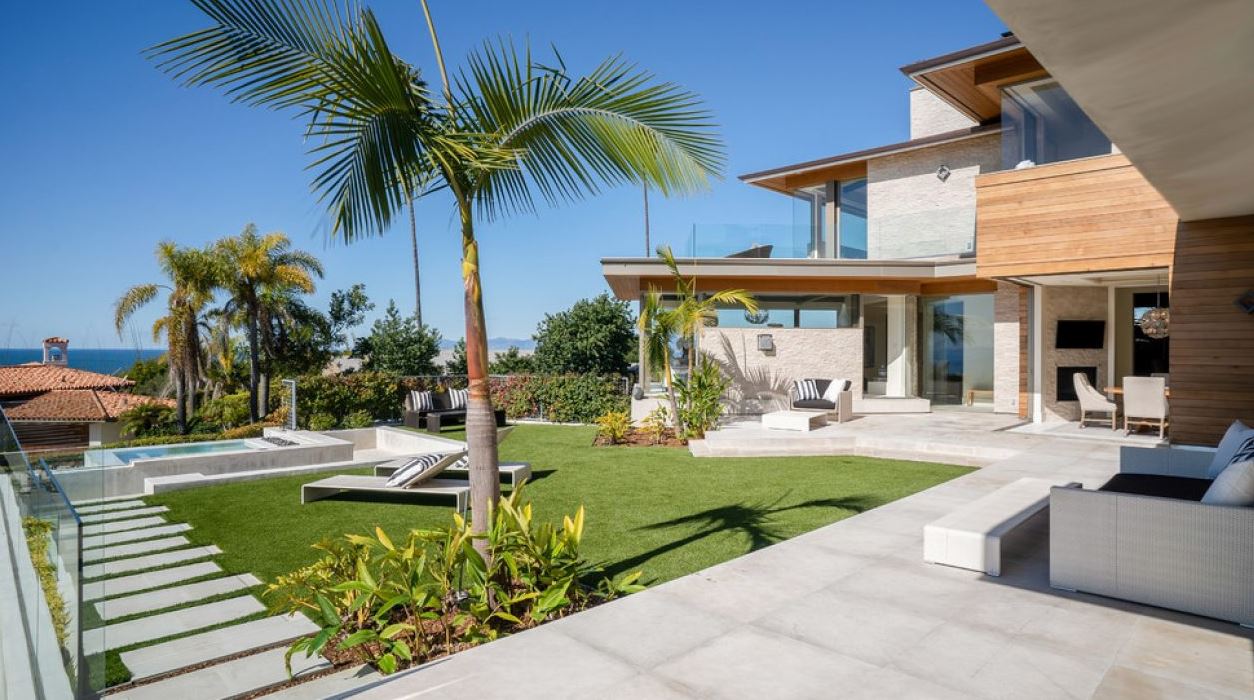Are you dreaming of a coastal lifestyle surrounded by the soothing sounds of the ocean and the beauty of nature?
Designing the perfect landscape for coastal living is essential to creating a relaxing and harmonious outdoor space.
Consider the climate, weather, native plants, and water features when designing for coastal living.
Explore the importance of landscape design, challenges, design ideas, and maintenance tips to craft your coastal paradise.
What Is Coastal Living?
Coastal living encapsulates the essence of tranquillity and serenity by embracing the unique allure of beachfront and seaside environments. It revolves around immersing oneself in the coastal lifestyle, where the sights and sounds of the ocean, the warmth of golden sands, and the gentle coastal breezes create a harmonious retreat. Coastal homes exude a distinctive charm, blending coastal aesthetics with the comfort of modern living, offering residents a sanctuary to unwind and connect with nature.
The coastal style emphasises simplicity and a connection to the natural surroundings, with a colour palette inspired by the sea and sky. Coastal retreats often feature open layouts, large windows to capture breathtaking views, and outdoor living spaces seamlessly merging with indoor areas.
Whether enjoying a leisurely morning coffee overlooking the waves or hosting a sunset gathering on the deck, coastal living invites a sense of peace and rejuvenation. The proximity to the water encourages a more laid-back approach to life, where every day feels like a vacation.
Why Is Landscape Design Important for Coastal Living?
Landscape design plays a pivotal role in enhancing the coastal living experience by seamlessly integrating outdoor spaces with the natural beauty of coastal landscapes. It is crucial to adopt climate-appropriate design principles that harmonise with coastal elements to ensure sustainability and resilience in the face of coastal weather challenges. A well-crafted coastal landscape design amplifies the aesthetic appeal of the surroundings and creates functional outdoor spaces that facilitate relaxation and outdoor living.
By carefully selecting native plants adapted to the coastal environment, landscape designers can create low-maintenance gardens that thrive in the salty air and sandy soil.
Features like rain gardens and permeable paving can help manage stormwater runoff, reduce erosion, and protect water quality.
Sustainable practices like composting and using recycled materials further contribute to the eco-friendliness of coastal landscape designs, making them visually appealing and environmentally beneficial.
What Are the Challenges of Designing for Coastal Living?
Crafting the perfect coastal landscape design entails overcoming challenges unique to seaside environments. Selecting salt-tolerant plants and hardscaping materials that offer wind resistance are crucial considerations. The constant exposure to coastal weather and conditions necessitates meticulous planning to ensure the landscape remains not only visually appealing but also resilient to coastal elements.
In addition to plant and material selection, another key challenge when designing coastal landscapes lies in the crafting techniques employed. With the constant barrage of salty sea air and strong coastal winds, the construction methods must prioritise durability and longevity.
Designers often need to adapt traditional landscaping practices to suit the specific demands of coastal locations. They must ensure that pathways, retaining walls, and other structures can withstand the harsh marine environment while still maintaining their aesthetic appeal.
How to Plan for a Coastal Landscape Design?
Effective planning for a coastal landscape design involves meticulous attention to detail to create outdoor spaces that cater to aesthetics and functionality. Consideration should be given to elements such as outdoor entertainment areas, beach access points, the integration of seaside gardens, and the strategic placement of outdoor decor to enhance the overall coastal atmosphere.

When designing outdoor entertainment areas in a coastal landscape, it is essential to prioritise views of the ocean and create a welcoming space for gatherings. Features like seating areas, fire pits, and outdoor kitchens can elevate the experience for residents and guests alike. Beach access points should be carefully planned to ensure easy entry and exit to the shoreline while maintaining the natural beauty of the coastal environment. Seaside gardens can introduce native plants, sand-friendly flora, and drought-resistant vegetation to harmonise with the surroundings and attract local wildlife, fostering a sense of tranquillity.
Consider the Climate and Weather
When planning a coastal landscape design, it is paramount to consider the unique challenges posed by coastal weather conditions. Opt for climate-appropriate, wind-resistant, drought-tolerant plants to ensure the design’s longevity and sustainability amidst the coastal elements.
Coastal weather conditions can be harsh, with high winds and salt spray posing significant challenges to plant health and growth. You can create a landscape that thrives in the face of strong coastal breezes by selecting plants with inherent wind resistance, such as ornamental grasses, coastal shrubs, and certain palm tree varieties.
Focusing on drought-tolerant species like succulents and native coastal plants conserves water and ensures that your landscape remains vibrant and healthy even during periods of limited rainfall.
Take into Account the Surrounding Environment
Incorporating coastal plants and native species into the landscape design is essential to harmonise with the surrounding environment and preserve the coastal vegetation.
Coastal plants are crucial in stabilising the soil, preventing erosion, and providing habitats for diverse wildlife species. These native plants also promote biodiversity, attracting pollinators and beneficial insects contributing to the ecosystem’s health.
Coastal vegetation helps conserve water and reduce the need for excessive irrigation, making it a sustainable choice for landscaping projects. By honouring the natural flora of the coastal region, designers can create spaces that look beautiful and support the delicate balance of the coastal ecosystem.
Think About the Purpose of the Space
When planning a coastal landscape design, it is vital to consider the intended purpose of the outdoor spaces. Whether the focus is on creating areas for relaxation, outdoor living, or alfresco dining, tailoring the design to meet these specific functions ensures the spaces are aesthetically pleasing and functional for coastal living.
Incorporating elements such as comfortable seating, outdoor kitchens, and shade structures can enhance the experience of relaxation and alfresco dining in coastal landscapes. Functionality and ease of maintenance are also crucial aspects to consider, ensuring that the design looks beautiful and practical for everyday use in a coastal environment.
By aligning the design with these key considerations, outdoor spaces cannot only reflect the coastal aesthetic but also enhance the overall lifestyle experience.
What Elements Should Be Included in a Coastal Landscape Design?
A well-crafted coastal landscape design incorporates various elements that enhance outdoor spaces’ visual appeal and functionality. These elements may include captivating water features, carefully selected outdoor furniture that complements the coastal colours, and aesthetic considerations that elevate the overall ambiance of the landscape.
Incorporating water features, such as fountains, ponds, or cascading waterfalls, can bring a sense of tranquillity and mimic the soothing sounds of the ocean. Choosing outdoor furniture made of durable materials like teak or weather-resistant wicker not only adds functionality but also seamlessly blends with the coastal theme.
A key aspect of the coastal design is the use of soft, breezy colours like hues of blue, sandy neutrals, and seafoam green, which evoke a sense of serenity and connection to the seaside environment.
Native Plants
Incorporating native plants and coastal species into the landscape design is paramount for creating an authentic coastal garden. By selecting plants that thrive in seaside conditions, the design can reflect the natural beauty of coastal landscapes, enhancing the overall appeal of the outdoor space.
Native plants are visually appealing and play a crucial role in maintaining the ecosystem balance of coastal areas. These plants have adapted to the coast’s specific climate and soil conditions, making them resilient choices for gardeners.
By introducing native species, you can create habitats for local wildlife and support biodiversity, ultimately contributing to a sustainable and healthy environment. The unique textures, colours, and fragrances of coastal plants add depth and character to the garden, transforming it into a dynamic and vibrant outdoor oasis.
Coastal-Friendly Materials
Utilising coastal-friendly materials and hardscaping techniques is crucial in ensuring the durability and sustainability of the landscape design.
This approach minimises negative impacts on the coastal ecosystem and contributes to the overall landscape’s resilience. Incorporating elements like permeable pavers, native plants, and proper drainage systems is vital for preventing erosion and preserving biodiversity. By prioritising these environmentally conscious practices, designers can create outdoor spaces that look stunning and function harmoniously within their coastal setting, promoting a sense of unity between the built environment and nature.
Water Features
Incorporating water features into a coastal landscape design adds a touch of tranquillity and coastal inspiration, enhancing the overall ambience of the outdoor space. Water features, from ocean-front landscaping to serene seaside fountains, are pivotal in creating a harmonious coastal retreat.
These water features serve as visually appealing focal points and contribute to the tranquillity and serenity associated with coastal environments. The sound of water gently cascading or the sight of a reflecting pool can evoke a sense of calmness and relaxation, transporting individuals to a place of peace and rejuvenation.
Water features can attract local wildlife, further integrating the natural elements of the coast into the designed landscape. They contrast the static elements of plants and structures in the outdoor space, infusing movement and life into the overall design.
Outdoor Living Spaces
Designing functional outdoor living spaces that adhere to coastal design principles is essential for creating a harmonious coastal retreat. Consider incorporating outdoor entertainment areas, strategic outdoor lighting, and coastal-inspired decor to enrich the outdoor living experience.
Outdoor entertainment areas significantly enhance the social aspect of outdoor spaces, providing a space for gatherings, parties, and relaxation. Coastal design principles use natural materials like wood, stone, and wicker, reflecting the coastal environment’s textures and colours.

The integration of outdoor lighting not only accentuates the design elements but also extends the usability of the outdoor space into the evening hours, allowing for a seamless transition from day to night in the coastal landscape.
What Are Some Design Ideas for Coastal Landscapes?
Designing coastal landscapes offers many creative possibilities to capture the essence of natural beauty and coastal charm. Whether embracing the tranquil allure of beachy and natural designs, infusing tropical paradise vibes, evoking nautical and coastal charm, or opting for modern and minimalistic aesthetics, the design ideas for coastal landscapes are as diverse as the coastal environments themselves.
Incorporating coastal colours like soothing blues, sandy neutrals, and oceanic greens can amplify the seaside vibe in these landscapes. Elements such as driftwood accents, seashell ornaments, and rope details add a touch of authenticity.
When aiming for a beachy theme, soft furnishings and weathered textures can create a relaxed atmosphere reminiscent of a day at the shore. For a tropical approach, lush palm trees, vibrant flowers, and exotic patterns bring a slice of paradise to the design.
Nautical styles often feature stripes, anchors, and maritime décor for a classic coastal feel.
Beachy and Natural
Embracing a beachy and natural design theme in coastal landscapes involves incorporating beach grass, seashells, and coastal-inspired decor. This design style captures the essence of natural beauty and fosters a connection with coastal communities whilst offering convenient beach access for residents and visitors.
The use of beach grass not only adds a touch of authenticity to the landscape but also helps stabilise sand dunes and prevent erosion. Seashells scattered strategically around the space evoke a sense of maritime adventure and tranquillity. Coastal decor elements like driftwood accents, nautical ropes, and weathered signs enhance the beachy theme, creating a harmonious blend of nature and seaside charm.
Incorporating these elements thoughtfully can transform a regular outdoor space into a serene coastal retreat that resonates with the soothing rhythm of the ocean waves.
Tropical Paradise
Creating a tropical paradise in coastal landscapes involves incorporating lush tropical plants, vibrant colours, and climate-appropriate elements that thrive in seaside conditions. By designing outdoor spaces reminiscent of exotic tropical destinations, the landscape exudes a sense of serenity and relaxation, transporting residents to their private coastal oasis.
This design theme embraces palm trees, bird of paradise plants, and hibiscus flowers to infuse a lush and vibrant atmosphere. The strategic placement of outdoor furniture made from weather-resistant materials like teak or rattan further enhances the tropical ambiance. Pops of bright and bold colours through cushions, parasols, and decorative accents bring a touch of tropical flair to every corner.
Incorporating features like water elements, such as fountains or ponds, adds a soothing sound and contributes to the overall tropical paradise feel.
Nautical and Coastal Charm
Infusing nautical and coastal charm into landscape designs evokes a sense of maritime nostalgia and coastal allure. By incorporating nautical themes, coastal architecture, and seaside gardens, the design captures the essence of coastal living, creating an inviting and timeless ambiance inspired by the sea.
The nautical motif can be reinforced throughout the outdoor space by strategically placing elements like driftwood accents, ropes, anchors, and boats as décor pieces. Coastal architecture, characterised by breezy open spaces and light colour palettes, further enhances the seaside feel. Incorporating native coastal plants and creating meandering pathways reminiscent of beach boardwalks in seaside gardens adds a touch of natural coastal beauty, truly bringing the essence of the ocean into the landscape design.
Modern and Minimalistic
Opting for a modern and minimalist design approach in coastal landscapes embraces simplicity, clean lines, and contemporary aesthetics. By focusing on sleek outdoor decor, minimalist outdoor furniture, and a coastal-inspired style, the design exudes sophistication and elegance while maintaining the essence of coastal living.
It seamlessly integrates nature’s beauty with man-made elements, creating a harmonious outdoor space that invites tranquillity and relaxation.
Utilising a neutral colour palette complemented by subtle pops of ocean-inspired hues further enhances the coastal atmosphere, evoking a sense of being by the seaside.
Incorporating natural materials like wood, stone, and rattan adds warmth and texture to the outdoor setting, blending modern design sensibilities with the organic essence of the coastal landscape.
How to Maintain Coastal Landscape Design?
Maintaining a coastal landscape design requires regular care and attention to preserve its aesthetic appeal and functionality amidst the challenges of coastal environments. Proper maintenance involves cleaning and pruning, protecting against salt and wind damage, selecting water features that are wind-resistant and salt-tolerant, and incorporating drought-resistant plants to adapt to changing weather patterns.
- Creating windbreaks using sturdy fencing or planting wind-resistant trees and shrubs can help shield the landscape from harsh coastal winds.
- Monitoring soil moisture levels and providing adequate irrigation support the growth of salt-tolerant plants.
- Regularly inspecting structures like pathways and retaining walls for damage from saltwater intrusion is essential for longevity.
- Mulching can also help retain moisture and regulate soil temperature in these challenging coastal conditions.
Regularly Clean and Prune
Regular cleaning and pruning are essential maintenance tasks for coastal landscapes to preserve their visual appeal and functionality. By paying attention to hard landscaping elements and crafting details, the landscape can maintain its pristine condition and withstand the rigours of coastal weather.
These tasks are crucial in preventing overgrowth, erosion, and deterioration of structures like pathways, retaining walls, and outdoor furniture. Cleaning helps in clearing debris that could accumulate and cause damage over time, while pruning ensures that plants remain healthy and well-shaped. Both processes contribute to a coherent and visually pleasing landscape design that complements the natural beauty of the coastal environment. Regular maintenance also allows for early detection of any potential problems, enabling prompt interventions to preserve the long-term durability of the landscape.
Protect Against Salt and Wind Damage
Protecting coastal landscapes against salt and wind damage is crucial for maintaining their structural integrity and aesthetic appeal. Utilise salt-tolerant materials and wind-resistant design elements to safeguard the landscape from the corrosive effects of coastal environments while preserving its charm.
Using materials such as stainless steel, aluminium, or composite decking can mitigate the damaging effects of saltwater, preventing erosion and deterioration.
Incorporating wind-resistant features like robust fencing, strategic plantings, and proper building orientation can help minimise the impact of strong coastal winds.
Employing coastal-specific design elements such as raised foundations, elevated walkways, and permeable surfaces can enhance durability and resilience against salt and wind exposure.
Consider Drought-Resistant Plants
Drought-resistant plants in coastal landscape designs are essential to conserve water and adapt to changing weather patterns.
By selecting plants that are well-suited to the coastal climate, you ensure their thriving and contribute to the area’s overall ecological balance. Drought-resistant plants require significantly less water than traditional options, making them ideal for water conservation efforts in drought-prone regions. These plants play a crucial role in maintaining the ecosystem’s health by providing habitat and food sources for local wildlife. Their resilience to harsh coastal conditions helps create sustainable and low-maintenance landscapes that enhance the beauty and functionality of coastal areas.
Monitor and Adjust for Changing Weather Patterns
Continuously monitoring and adjusting coastal landscape designs to accommodate changing weather patterns is essential for ensuring the longevity and resilience of the outdoor space. Implement wind-resistant features and climate-appropriate adjustments to mitigate the impact of coastal weather fluctuations and preserve the beauty and functionality of the landscape.
The landscape can be shielded from harsh coastal winds by incorporating windbreaks, such as strategically placed trees or shrubs, reducing erosion and plant damage.
Selecting native plant species well-adapted to the local climate can enhance the landscape’s sustainability and reduce maintenance needs.
Regularly assessing the performance of these design elements and making necessary adaptations in response to evolving weather patterns will help maintain the landscape’s integrity and visual appeal over time.
